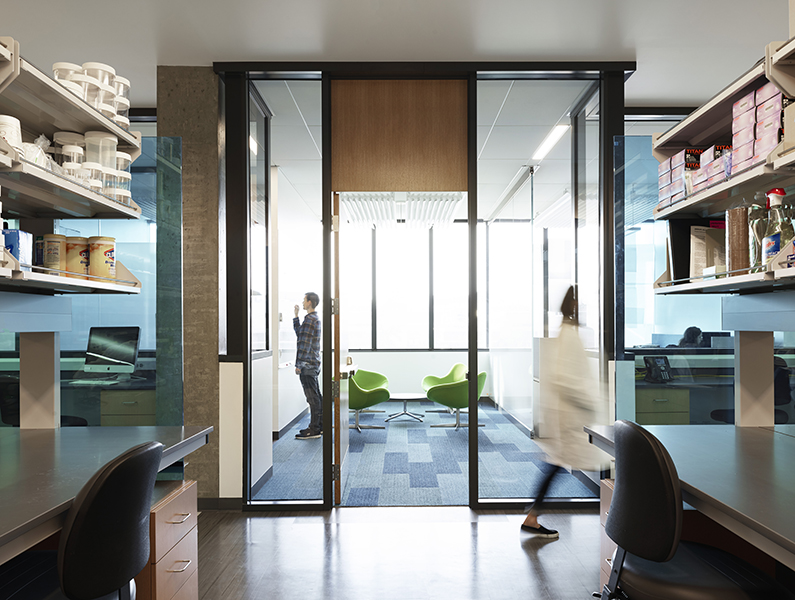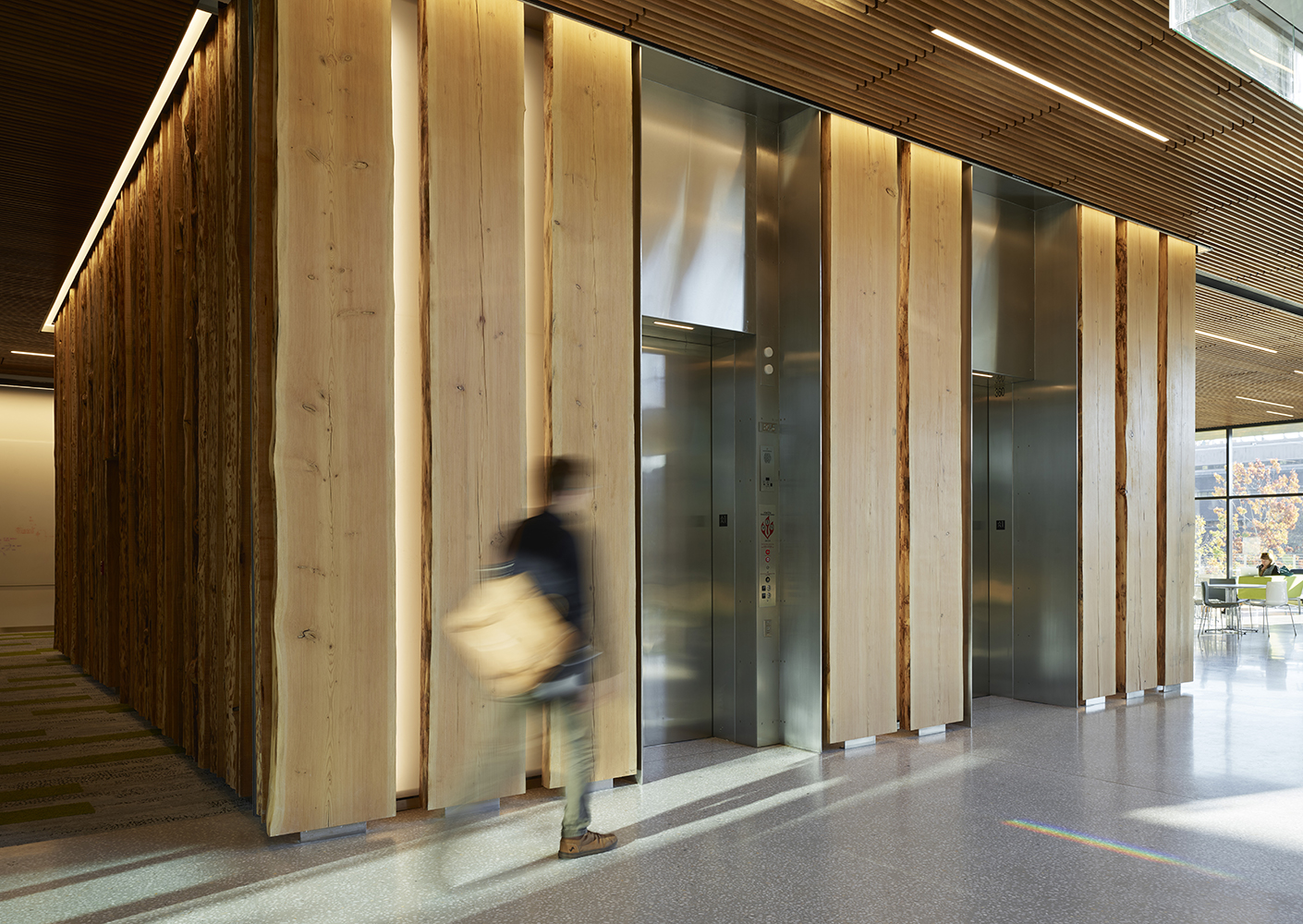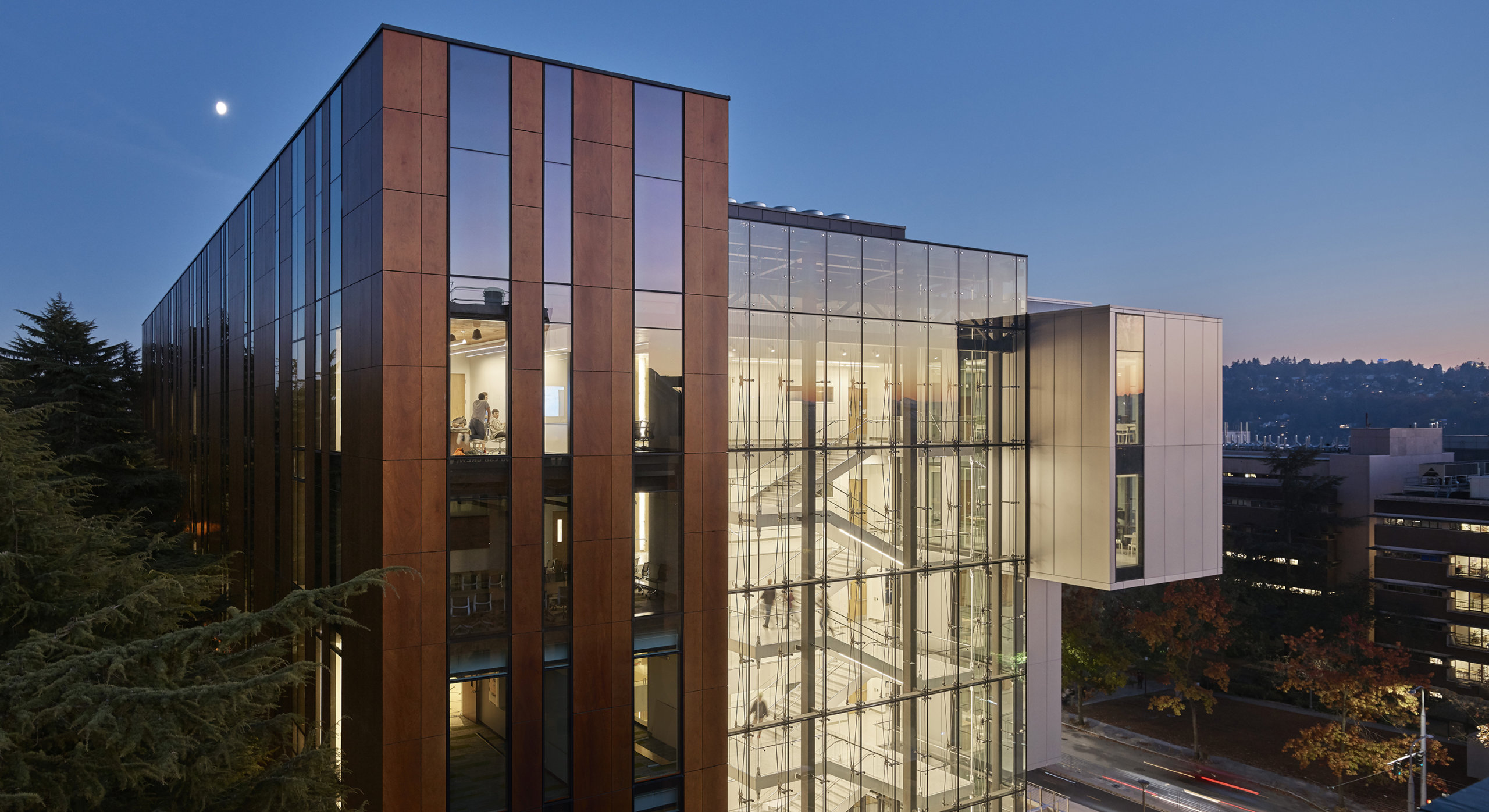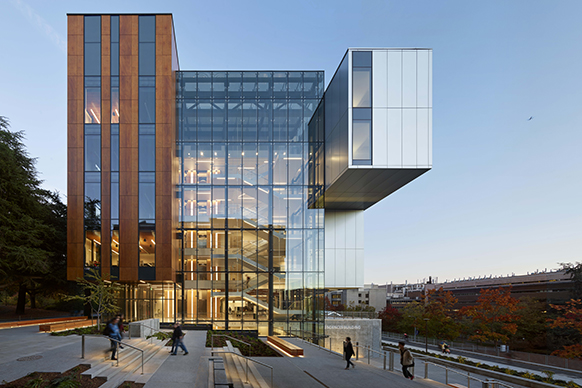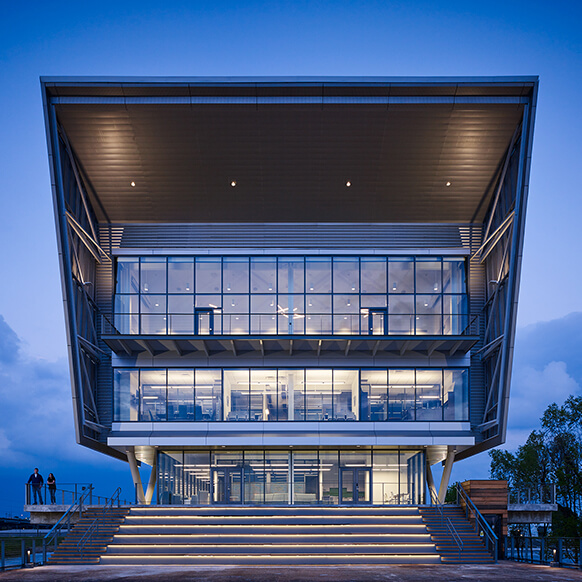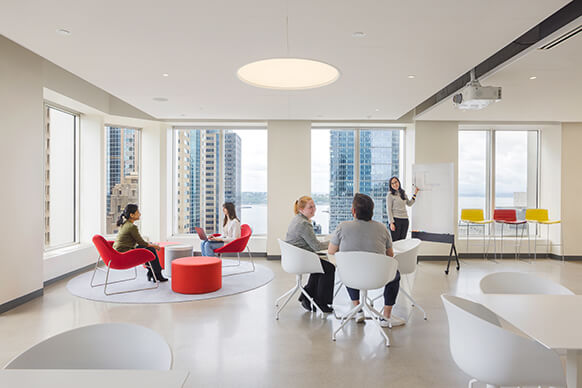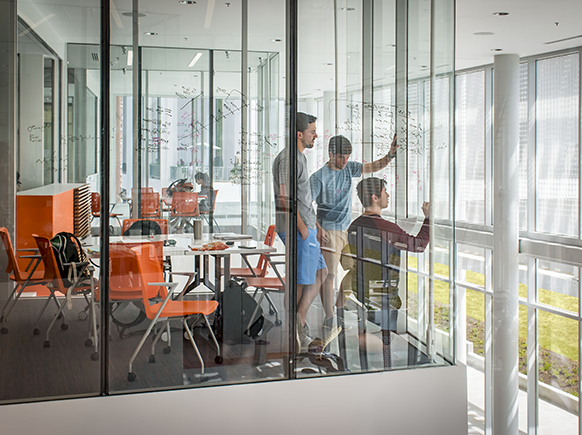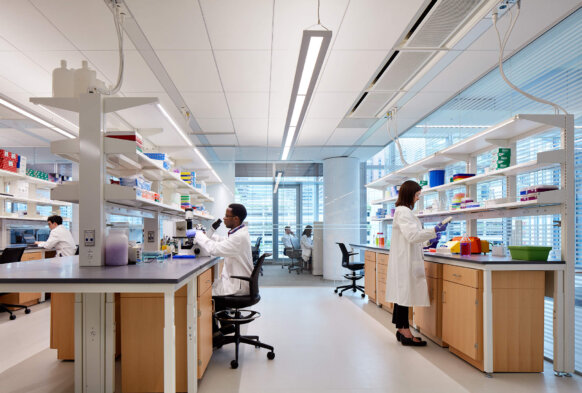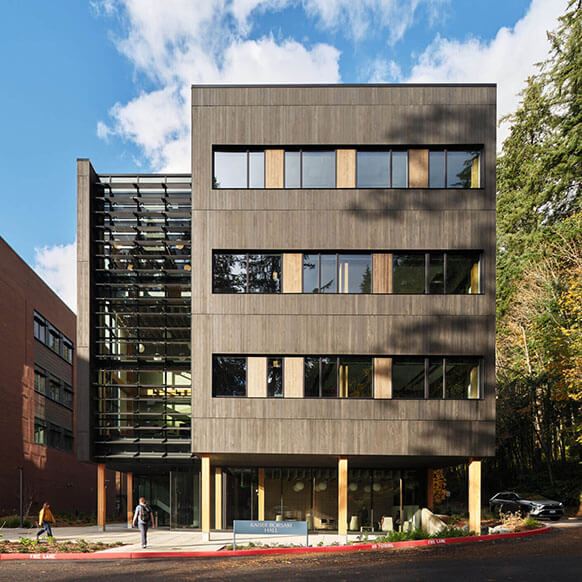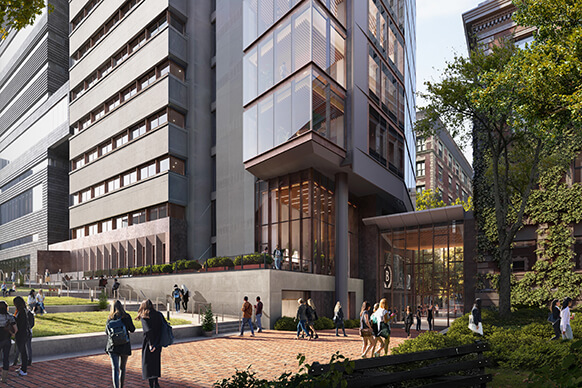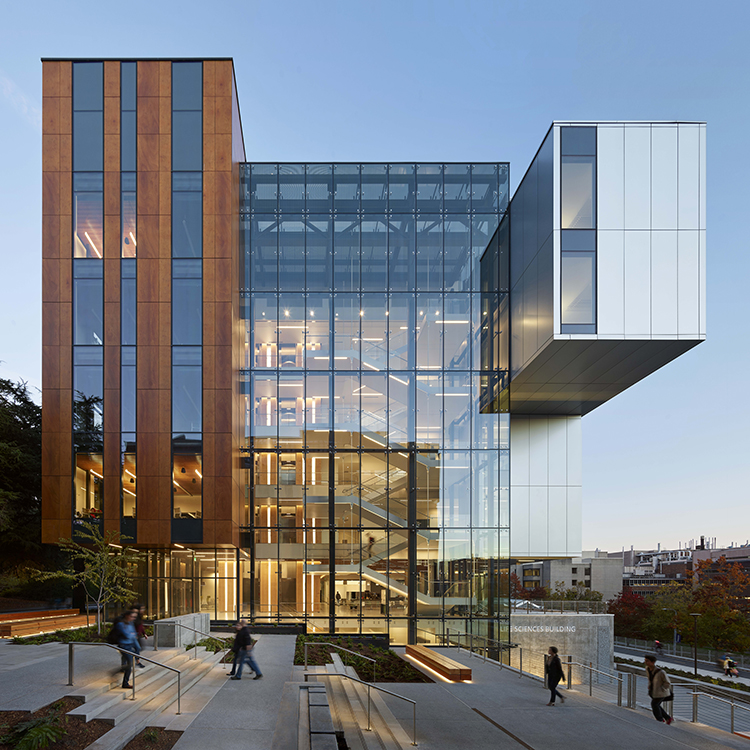
University of Washington, Life Sciences Building
The largest STEM program in the state needed to expand its capabilities to meet growing demands. With more than a third of all students passing through the Department of Biology, the University of Washington looked to us to create a new facility that embodied the school’s core values of scientific discovery, collaboration, active learning, and environmental sustainability.
We designed a flexible, collaborative, and highly sustainable building. Large landings on the open stair and breakout spaces with soft seating create connections between students, faculty, and researchers. Innovative solar glass fins put science on display while generating enough electricity to light 12,400 square feet of offices year round. And a greenhouse located just a couple steps from Seattle’s largest pedestrian trail encourages the community to engage with the university and discover the science happening within.
Robert Goff, Assistant to Chair, UW Biology Department
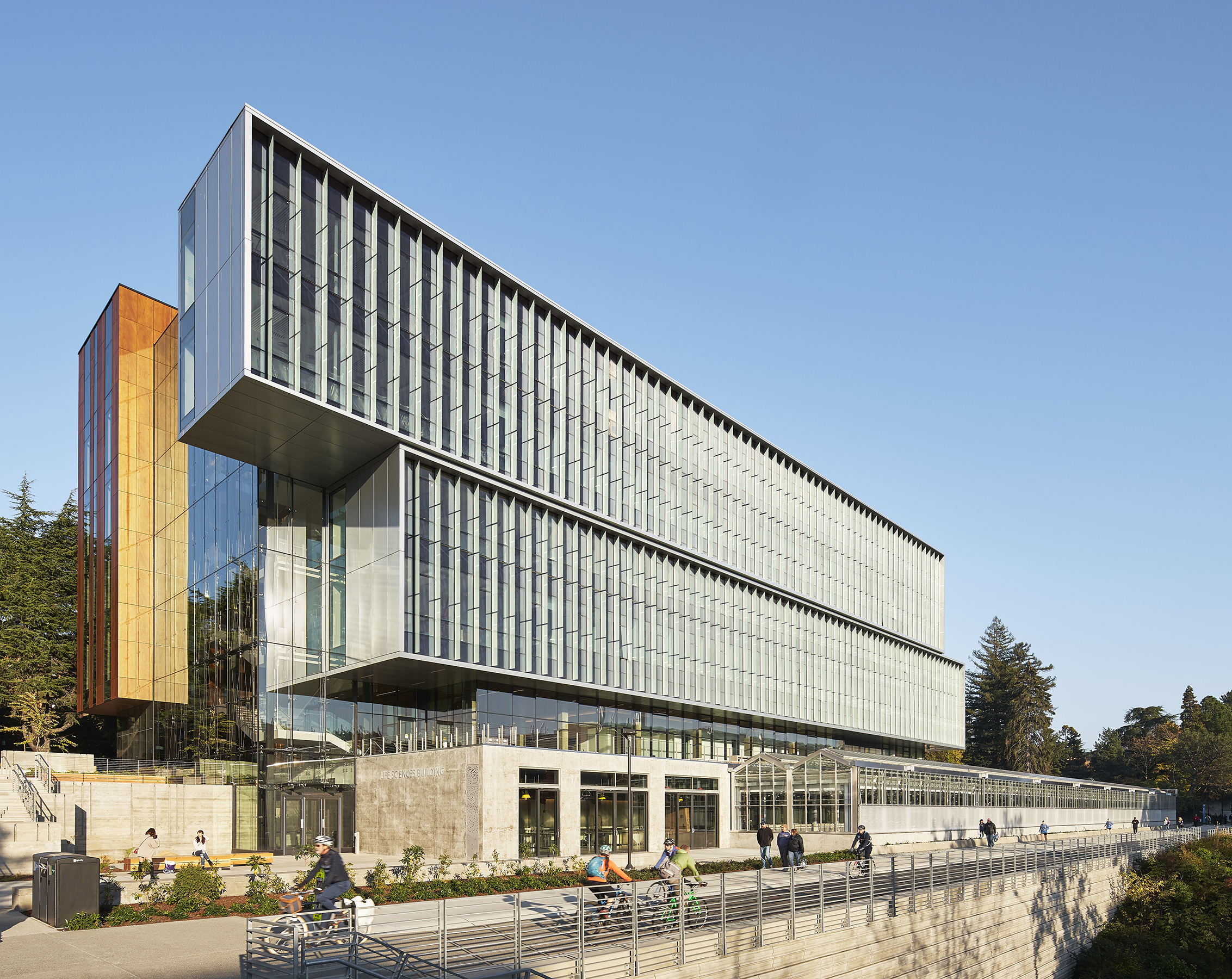
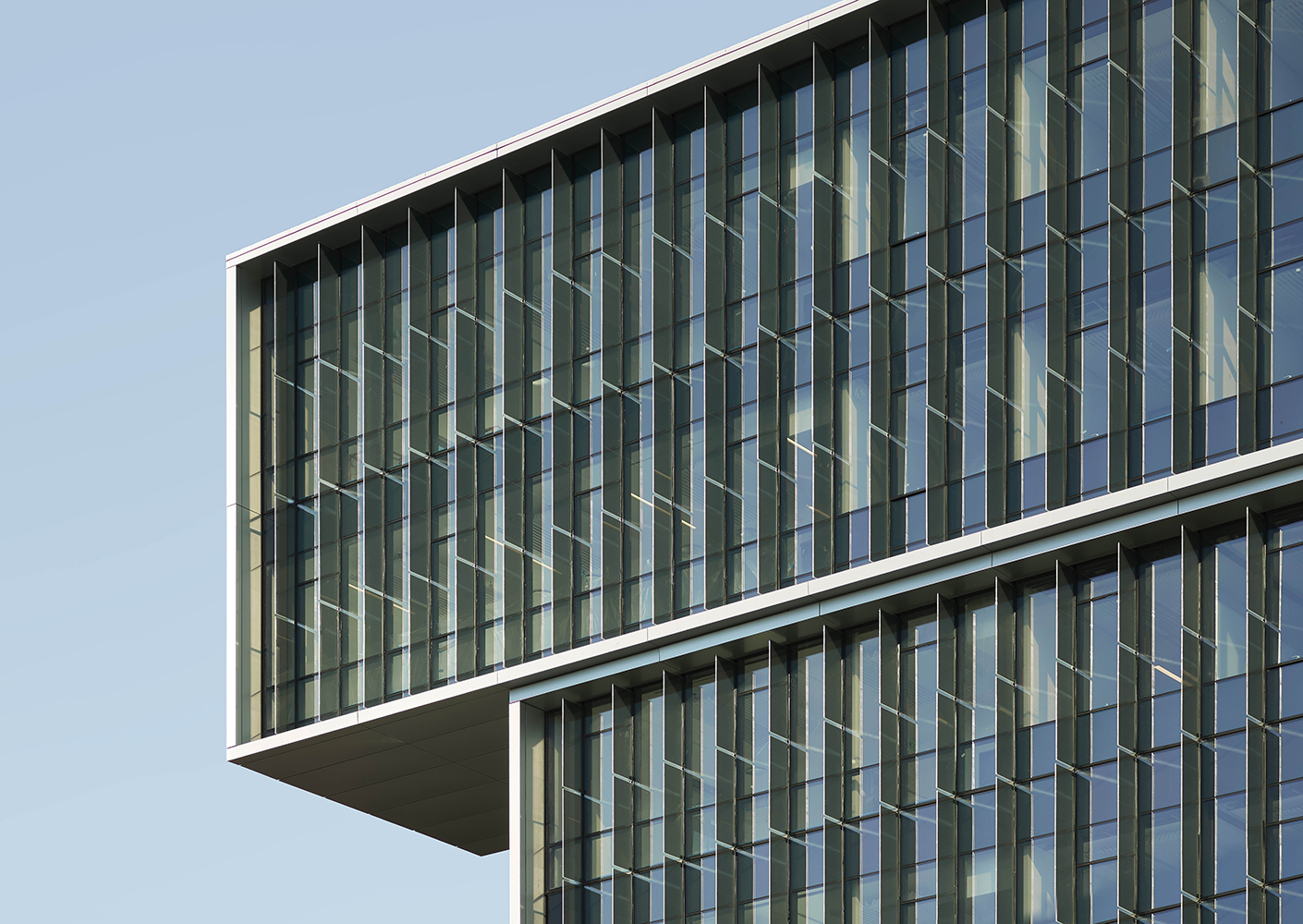
In a first-of-its-kind installation, the building uses “photovoltaics”—solar cells on thin film that are laminated within vertical glass fins and integrated into a glass curtain wall. This reduces unwanted solar heat gain while providing expansive views from within the offices. It also produces enough electricity to light all four floors of offices.
The main staircase features oversized landings and encourages chance encounters between scientists. The glass box around it is designed to “disappear” when looking out to the courtyard, the primary campus thoroughfare. Additionally, a public deck invites interaction from pedestrians using the Burke-Gilman trail.
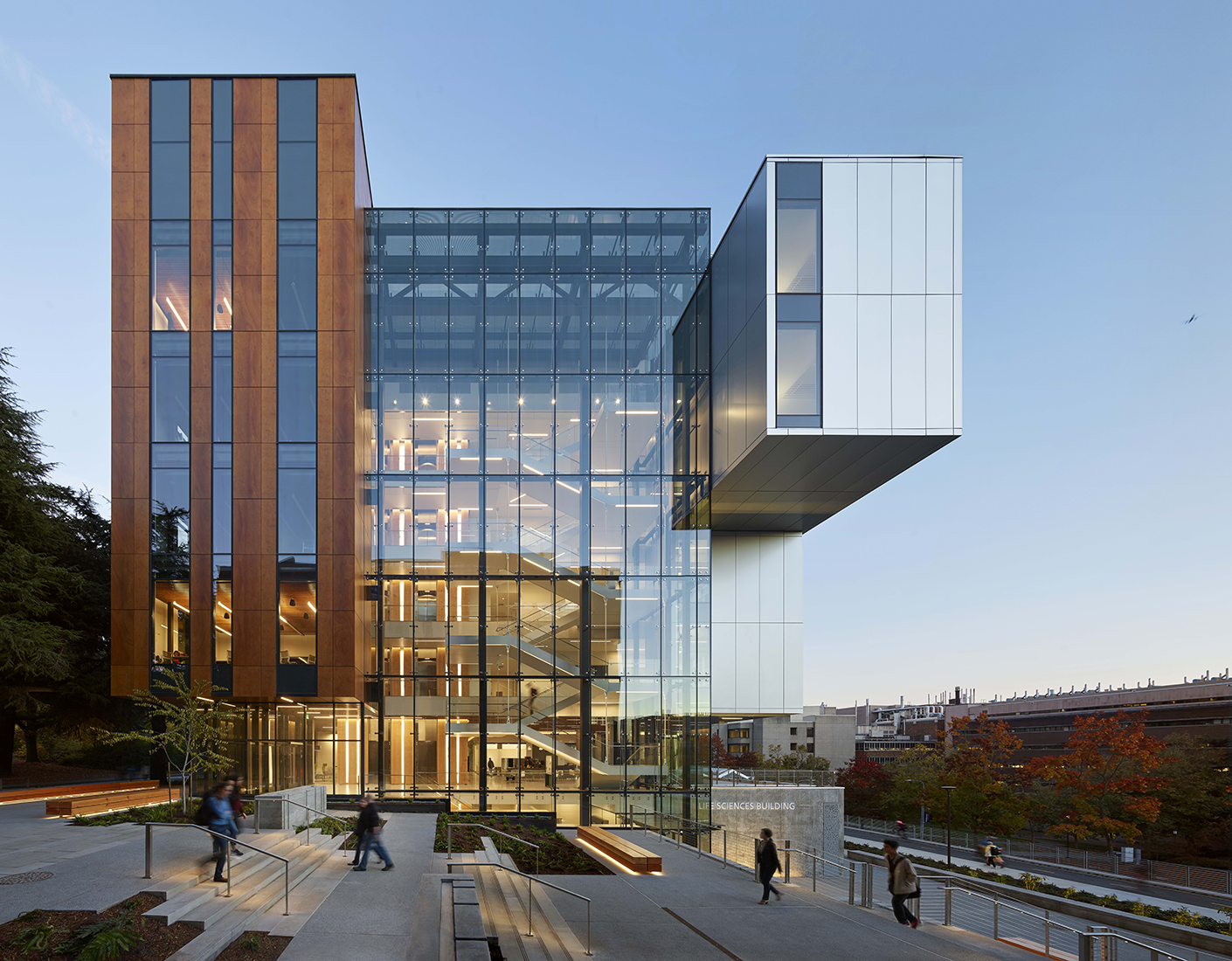
UW Solar, a student group at the university, was actively involved in the solar and water designs. Students wrote grants for funding, presented findings to the client, and now lead building tours to pass on their knowledge. Collaboration with future designers also ensures innovative solutions to climate change spread long after graduation.
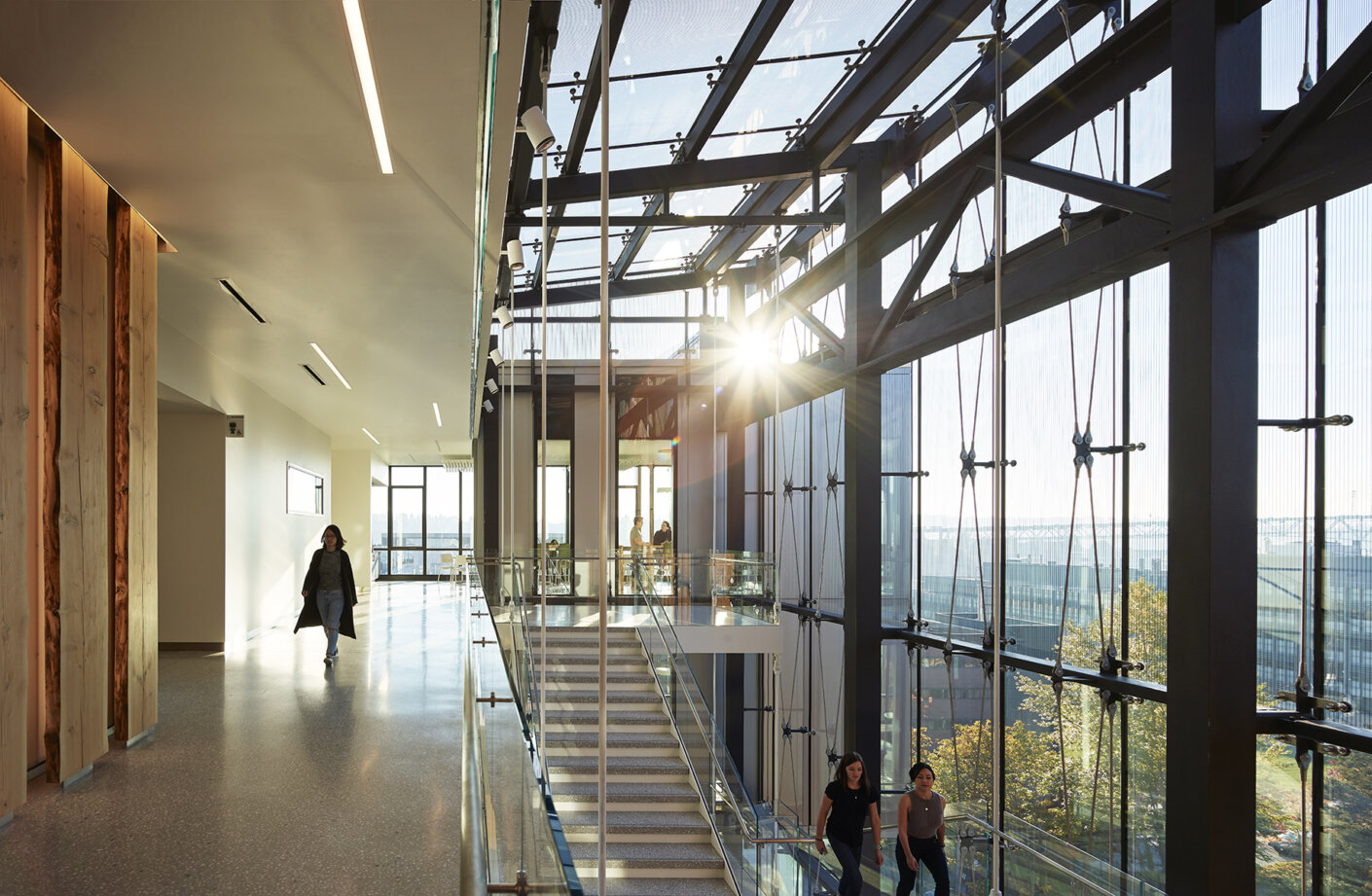
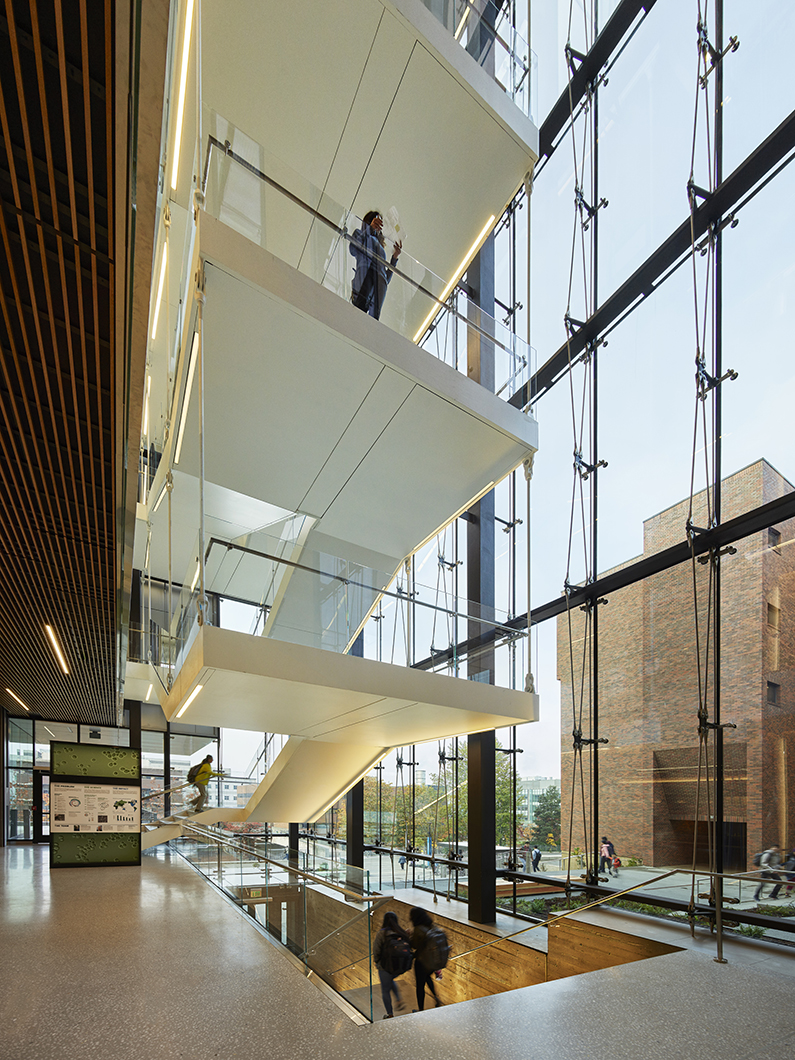
Charged with designing technical teaching and research spaces that are open, flexible, and efficient, we landed on a space that enables eighteen more pods that offer endless views through laboratories, offices, conference rooms, and break spaces. The result is a space that researchers are excited to study and work in.
